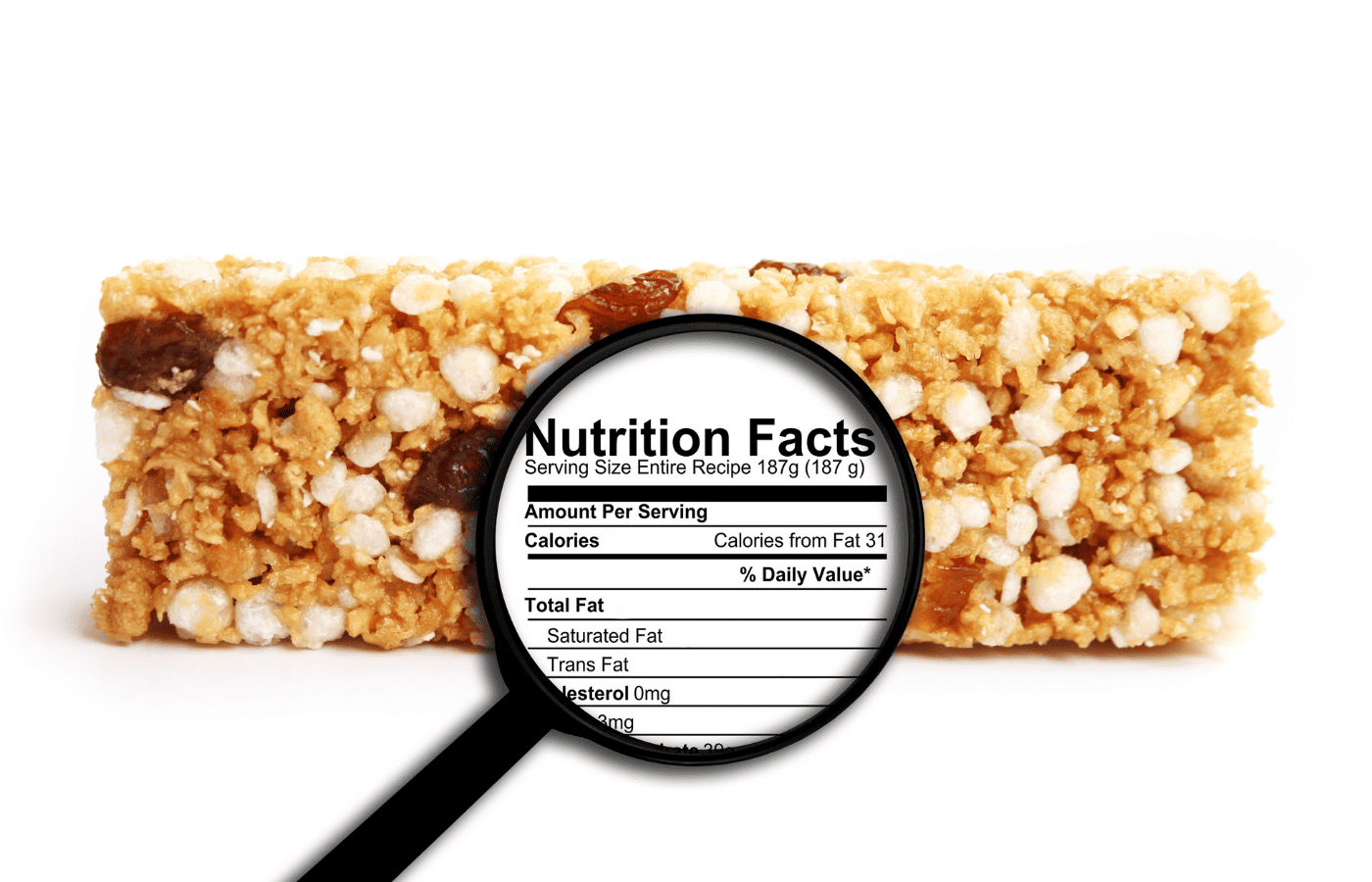How to Understand and Use Nutrition Facts Labels

Eating healthy when you aren’t used to it can be a complex process, especially when understanding nutrition facts labels.
Knowing what ingredients and nutrients are in the food you’re eating is essential if you want to achieve your desired results.
In this article, we will explore what to look for on nutrition labels when making healthier meal choices.
This site uses ads and affiliate content as an Amazon associate earning on qualifying purchases. Disclosure.
What is the first thing you should check, on a Nutrition Facts Label?
When checking a nutrition label, you should first consider the serving size. It is essential because all the information on the title is based on that specific serving size. It’s easy to overlook this detail and assume that the values listed apply to the entire package or container.
By understanding the serving size, you can accurately assess the nutritional content and make informed decisions about what and how much you consume.
What are the 5 Main Things to Look for on a Nutrition Label?
If you are concerned with what to look for on nutrition labels, there are five things to notice that can provide important information about the food you consume.
Serving Size
First, it is essential to look at the serving size. It tells you the recommended portion size for the food and allows you to assess the nutritional information accurately. Be mindful of whether the serving size listed is similar to the amount you typically consume.
Calories
Next, check the calories per serving. It will give you an idea of the energy content of the food and can help you manage your calorie intake.
Macronutrients
The third thing to notice is the macronutrients: fat, carbohydrates, and protein. Please pay attention to the amounts of each nutrient per serving and consider how they fit into your overall diet and health goals.
Ingredients
Another critical aspect of the nutrition label is the list of ingredients. It can give you insight into what is actually in the food and help you make informed choices about the quality and healthfulness of the product.
Avoid products with long lists of unrecognizable ingredients – these are usually processed foods with more calories than their natural counterparts.
Additional Nutrients
Finally, take note of any additional nutrients or vitamins listed on the label. It can include fiber, sodium, or specific vitamins and minerals.
Knowing the amounts of these nutrients can help you make choices that align with your particular dietary needs or goals.
By paying attention to these five main things on a nutrition label, you can make more informed decisions about your food and better manage your overall health and well-being.
Don’t miss: How To Eat Healthy When You Hate Vegetables?
What are the 7 Nutrients that must be listed on a Nutrition Facts label?
By understanding and monitoring the amounts of nutrients in food and beverages, individuals can make informed choices about their diet and maintain a balanced and healthy lifestyle.
The seven nutrients that must be listed on the Nutrition Fact label are:
Calories
The calories represent the energy provided by a serving of the food or beverage.
Total Fat
It includes both saturated and unsaturated fats. It is essential to keep track of the amount of fat consumed, as excessive intake can cause health issues such as heart disease.
Cholesterol
This nutrient is found in animal products and can impact heart health if consumed excessively.
Sodium
Also known as salt, sodium is essential for the body but should be consumed in moderation. High sodium use leads to high blood pressure.
Total Carbohydrates
The carbohydrates include both sugars and dietary fiber. Paying attention to the amount of added sugars is essential, as immoderate consumption can lead to weight gain and other health issues.
Protein
Protein is essential for growing, repairing, and maintaining body tissues. It is crucial to consume enough protein, especially for those with active lifestyles or specific dietary needs.
Vitamins and Minerals
The label may list specific vitamins and minerals, such as vitamins A, C, calcium, and iron, essential for overall health and proper bodily function.
How do you read Fat on a Nutrition Label?
Reading fat nutrition labels can be confusing, but it’s an essential skill to have to make informed choices about your diet.
Here are some tips on how to read fat nutrition labels:
Start with the serving size
It is the first thing to look at on a nutrition label. It will tell you how much of the product is considered one serving, and all the nutritional values are based on that amount.
Check the total fat.
Look for the total fat content listed in grams. It includes all types of fat, such as saturated, trans, and unsaturated fats. Paying attention to the full-fat content is essential because high levels of saturated and trans fats can increase the risk of heart disease.
Identify saturated and trans fats.
These are the unhealthy fats that you want to limit in your diet. Saturated fats are present in animal products like meat and dairy, while trans fats are often in processed foods. Aim for low amounts of these fats in your diet.
Look for unsaturated fats.
Unsaturated fats are healthier alternatives to saturated and trans fats. These fats are present in nuts, seeds, avocados, and oily fish. Including moderate fats in your diet can positively affect your overall health.
Pay attention to cholesterol.
Cholesterol is a fat naturally produced by our bodies, but too much can increase the risk of heart disease. Limiting your intake of cholesterol-rich foods can help maintain healthy levels.
Consider the percent daily value (%DV)
The %DV is a guideline that shows how much of a particular nutrient one serving of the product provides compared to the recommended daily intake.
Why is it Necessary?
When it comes to eating well, paying attention to nutrition labels is necessary for several reasons. It empowers you to make informed choices about what you eat, helps you manage your calorie intake, and promotes a healthier overall diet.
First and foremost, nutrition labels provide essential information about the calorie content of a food or beverage.
In addition to calories, nutrition labels also provide information about the macronutrient content of a product, including fat, carbohydrates, and protein.
While it’s important to remember that not all fats or carbohydrates are created equal, understanding the types and amounts of these macronutrients in your foods can help you make healthier choices.
For example, eating low-fat and high-fiber foods can promote healthy weight and overall health.
Nutrition labels also list the ingredients in a product, allowing you to identify any potential allergens or ingredients you may want to avoid. It is essential if you have any dietary restrictions or sensitivities.
Lastly, looking at nutrition labels can help you make more mindful and conscious choices about what you eat.
By being aware of the nutritional content of the foods you consume, you can adjust your diet to align with your goals. It includes choosing nutrient-dense foods, high in vitamins and minerals and low in added sugars and sodium.
How to Understand and Use the Nutrition Facts Label – Conclusion
Reading nutrition labels carefully before purchasing food items can go a long way in helping us reach our health goals faster and more efficiently without sacrificing taste or quality of life along the way!
Pay close attention to ingredients used, caloric value per serving size, and nutrient contents. All three factors combined will give you an accurate picture of how beneficial (or detrimental) something may be depending on its intended purpose within your overall dietary plan.
FAQs Nutrition Labels
How can you use nutrition labels to improve your diet?
Nutrition labels can be valuable for improving your diet and making healthier food choices.
By understanding and utilizing the information on these labels, you can make more informed decisions about the foods you consume.
Nutrition labels provide valuable information about the amounts of various nutrients in a food. It includes fats, carbohydrates, protein, fiber, sugars, and sodium.
You can make decisions that align with your nutritional objectives if you consider these ideals. For example, you can compare labels and choose lower-sodium options to reduce sodium intake.
How many nutrients do we need a day?
The amount of nutrients we need daily depends on age, gender, weight, and activity level. However, some general guidelines can help determine how much of each nutrient we should be consuming.
For example, the recommended daily intake of macronutrients (carbohydrates, proteins, and fats) for adults is typically around 45-65% of total calories from carbohydrates, 10-35% of total calories from protein, and 20-35% of total calories from fats.
In terms of specific vitamins and minerals, the recommended daily allowances vary. For example, the recommended daily vitamin C intake for adults is typically around 75-90 milligrams, while daily calcium intake for adults is about 1000-1200 milligrams.





